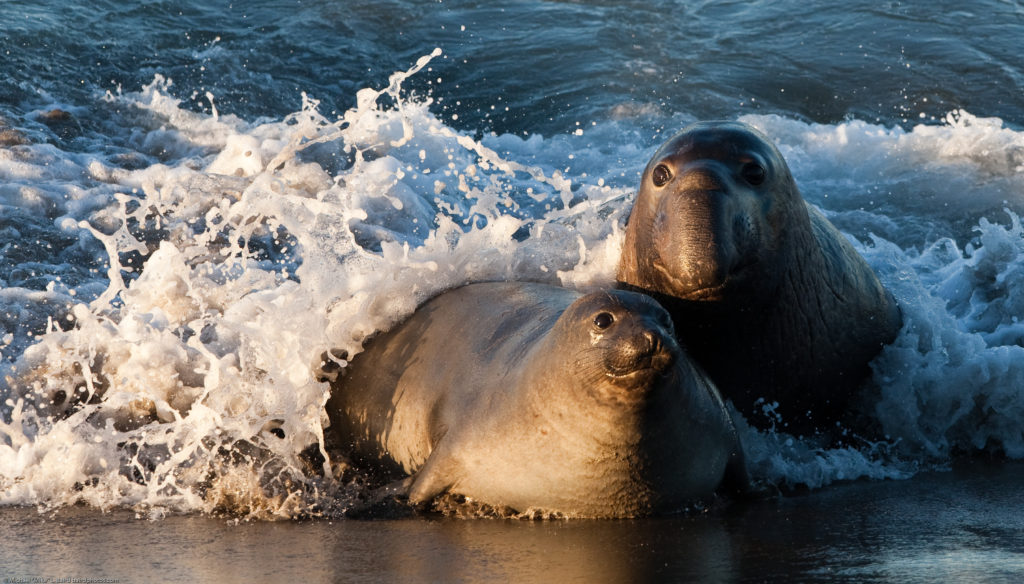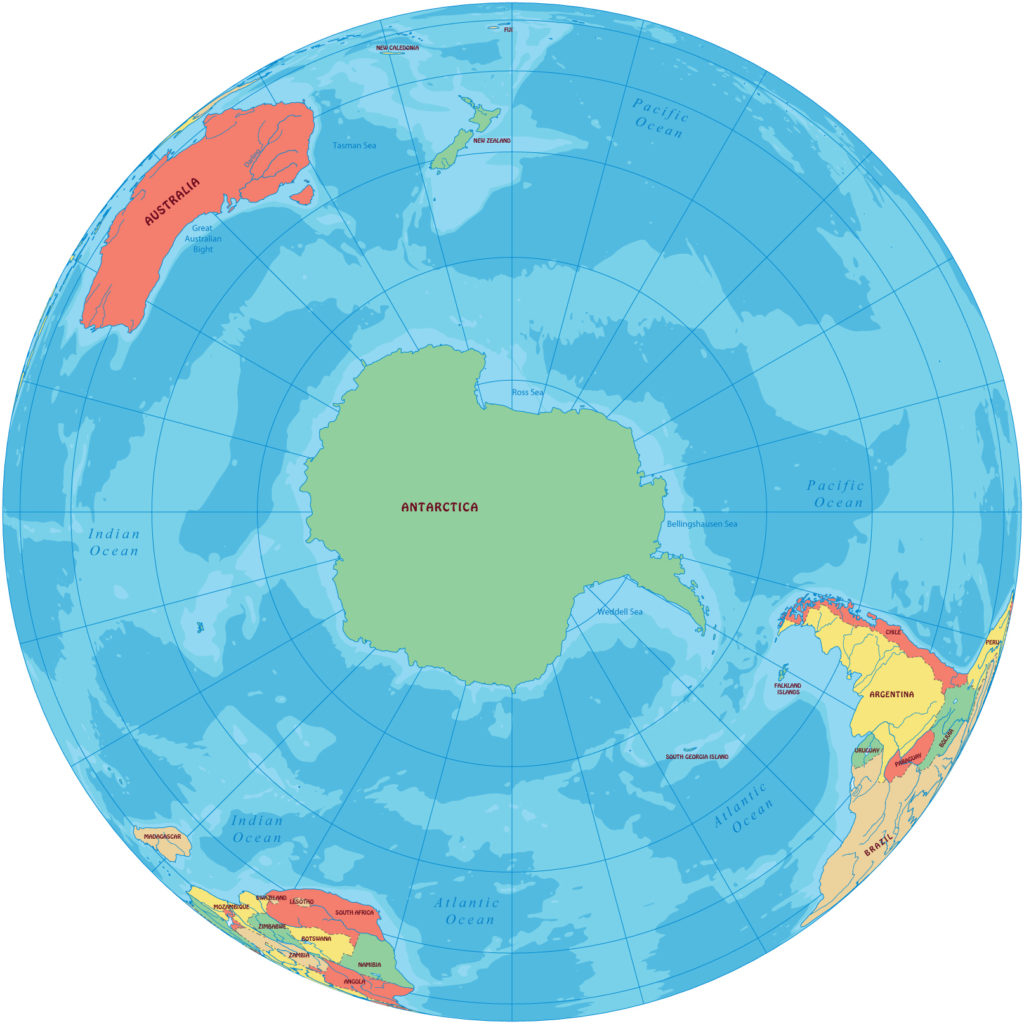We invite you to meet the southern elephant seals which are the biggest seals in the world. These huge and interesting creatures are also known as giant seals or Mirounga Leonie in scientific terms.
Table Of Content
Southern Elephants Seals´ Main characteristics
This creature is one of the two species of sea elephants, being the Mirounga angustirostris or Northern elephant Seal the other member. It is also the largest member of the pinniped genus as well as the largest marine mammal that is not a cetacean. They are named because of their large size and the male´s big trunk, which resembles an elephant’s trunk and is used to produce very noisy roars, especially during the breeding season. This species is approximately 40% heavier than the Northern elephant Seal and twice as heavy as a male walrus. In relation to the above, it is important to mention that their trunks measure about 30 centimeters and the seals make use of them to fight with  other males during the mating and breeding seasons when necessary. In the case of females, they don´t have a trunk, but a short nose and a snout. Their large and rounded bodies have a color that can vary between grey and brown in the case of adults, while the offspring look much more intense, being of a tone between dark grey and black. Among other features of the southern elephants seals, we can mention their outstanding black eyes, which represent a great tool when it comes to hunting prey. On the other hand, they also have posterior limbs, which make up their tail and caudal fin, which are used to obtain the necessary propulsion at the moment of swimming and even when moving on land, these fins are key pieces for their balance. In this way the giant seal is able to move at a speed of about eight kilometers per hour, usually in short distances either to hunt prey or return to the water.
other males during the mating and breeding seasons when necessary. In the case of females, they don´t have a trunk, but a short nose and a snout. Their large and rounded bodies have a color that can vary between grey and brown in the case of adults, while the offspring look much more intense, being of a tone between dark grey and black. Among other features of the southern elephants seals, we can mention their outstanding black eyes, which represent a great tool when it comes to hunting prey. On the other hand, they also have posterior limbs, which make up their tail and caudal fin, which are used to obtain the necessary propulsion at the moment of swimming and even when moving on land, these fins are key pieces for their balance. In this way the giant seal is able to move at a speed of about eight kilometers per hour, usually in short distances either to hunt prey or return to the water.
Weight and Size
In the same way than the hooded seals this species presents sexual dimorphism, since the male once adult, has measures of more than 4.5 meters of total length, in the same way reaches a weight between 2200 and 4000 kilograms. Although there is a record of giant seal of 6000 kilograms and about 6 meters in length. In turn, females measure about 3.5 meters in length and an average of 900 kilograms in weight.
Let´s learn more about them
Southern Elephants Seals: Behavior
They spend most of their lives inside the sea, except to mate, give birth and molt skin. Males are the ones who usually dive deeper and get farther away from the continental platforms. They usually perform dives from 300 to 500 m which last up to 30 minutes, although there are incredible records where they descend more than 1.000 m for 120 minutes.
The males are territorial and aggressive among them; because they carry out battles where they raise two thirds of their body to fight and emit strong vocalizations. In these clashes they may end up badly wounded, but rarely do they die, since their thick skin helps them withstand the impacts and deep wounds.
Southern Elephants Seals: Habitat and Distribution
They inhabit the open ocean during the non-breeding season, where they can immerse themselves in notable depths. During the breeding season the southern elephant Seal is usually found on beaches and rocky terrain, and sometimes on ice and snow.As for their distribution, it should be noted that this species has a population of around 675 000 individuals. They are distributed mainly in the areas that make up the border of the Antarctic continent. For its part, the total population of giant seals is divided into three known subpopulations; firstly, a group is in the South Atlantic, which has at least some 400000 individuals, distributed in the South Georgia Islands, another part in the Malvinas islands, some individuals in the Valdés Peninsula and others in the southern Patagonia. As for the second group, this subpopulation is located in the waters that make up the southern Indian Ocean and has approximately 200000 individuals. And finally, the third subpopulation is a little smaller than the previous two, and it is distributed in the waters that make up the Pacific Ocean, and has about 75 000 specimens of giant seal.
What do Southern Elephant Seals Feed On?
They dive repeatedly at depths between 400 and 1,000 meters for more than 20 minutes, to hunt their preys which are squid and fish mainly. Due to the inaccessibility of their deep water feeding areas, there is no exhaustive information about their dietary preferences in such locations, but according to many evidences they seem to locate their prey using their vision as the bioluminescence of some animals, squid for example, can facilitate their capture. Sea elephants don´t have a developed system of echolocation as that of cetaceans, but it is believed that their vibrissa (facial whiskers), which are sensitive to vibrations, play a role in the search for food. When they are on the coast seals also consume mollusks, crustaceans, krill, cephalopods and even algae.
Southern Elephants Seals : Reproductive Method
They are polygamous by nature and from August to October they settle on the coasts to reproduce themselves. They are organized socially in harems where the male dominates on dozens of females, between 20 and 40 approximately. However, larger harems have also been observed where one or more subdominant males have access to females. Females give birth to a single puppy between two or five days after reaching the breeding sites. Then, the puppies are breastfed for about 23 days and after this time the females return to the sea and let the puppies fend for themselves. Puppies remain on land or in shallow water for four to six weeks before leaving the beaches in search of the ocean. Between November and April, they crawl back to the beaches where they stay for three to five weeks to move skin and hair.
Southern Elephant Seals: Main Threats
As natural predators of the Southern Elephant Seals we must mention the orcas in the first instance, which mainly feed on young specimens. Leopard seals and white sharks represent also a serious threat for them.
In ancient times they were very persecuted by the natives of Australia and South America. Years later they were hunted for their valuable fat and in 1950 they were commonly captured to produce dog food.
Today it is not a species under threat because of its remoteness from human disturbance, although the commercial fishing carried out near its location could deplete its food sources jeopardizing its integrity.
Let´s have a final look of these wonderful creatures.





